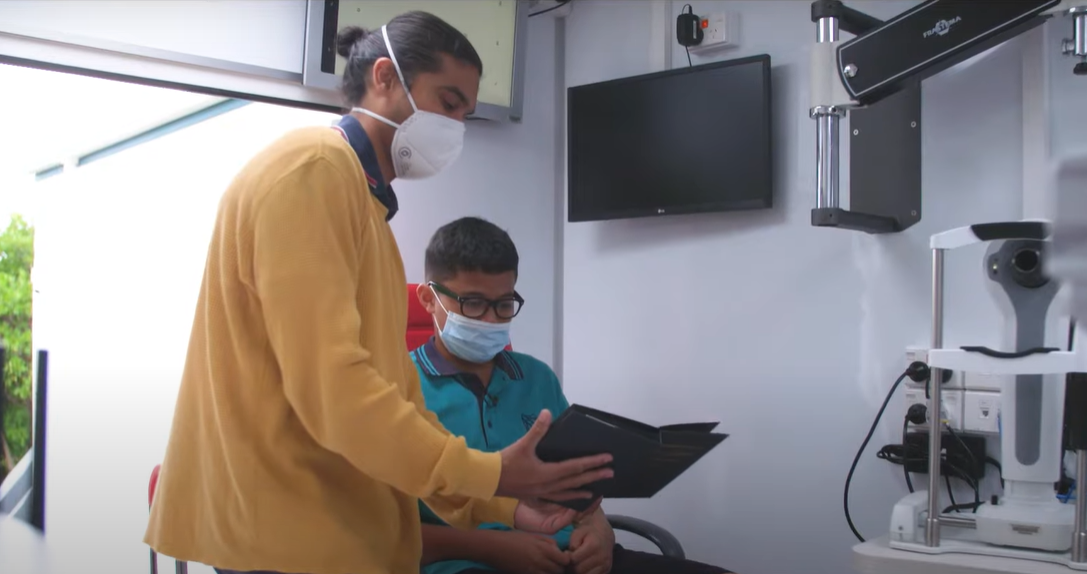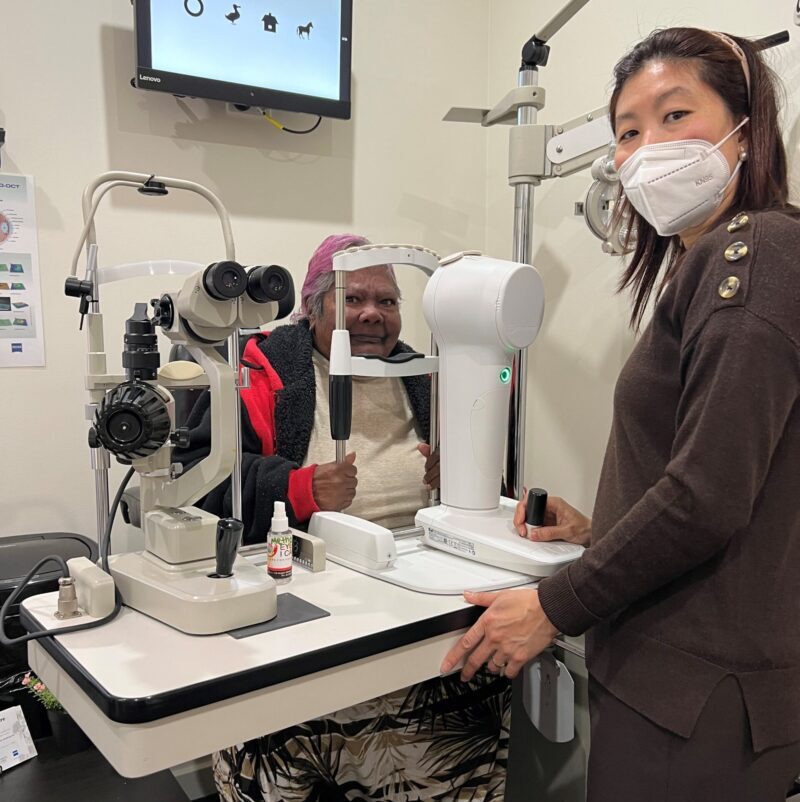Indigenous communities face many barriers to accessing timely eyecare. Barriers include financial, cultural, social and geographical constraints—as well as a lack of culturally safe and responsive health services. [1]
In Australia, Aboriginal and Torres Strait Islander people experience 3 times the rate of blindness and vision impairment compared to non-Indigenous Australians, according to findings from the 2016 National Eye Health Survey. The good news? If detected early enough, over 90% of this vision loss can be treated or prevented. [2]
At Medmont, we’re incredibly inspired by the eye care professionals removing barriers in order to close the eye health gap for Indigenous Peoples—in Australia and beyond.
In honour of National Aborigines and Islanders Day Observance Committee (NAIDOC) Week 2023, here are a few of the individuals and organisations working towards eyecare equity in Australia and New Zealand.

Siri: Championing Eyecare Accessibility in Broken Hill
Optometrist Siri Tang owns Eyerys I Care in Broken Hill, New South Wales. She fell in love with the outback mining town during her time there as a fly-in-fly-out locum.
“Broken Hill is a great community. We get a great deal of satisfaction helping our patients achieve the best outcomes.”
Siri is passionate about making eye exams a pleasant experience for Broken Hill’s First Nations people, as she treats conditions including dry eye disease, diabetic retinopathy and cataracts.
During a recent visit by Medmont, Siri told us she’s used our E300 corneal topographer for years because, “The results are easy to understand for First Nations people with keratoconus and those who need specialty lenses”. She recently upgraded to the Meridia™ to extend services for patients with dry eye disease.
“Having the latest technology in the outback setting assists the visiting ophthalmologists at the hospital to select IOL lenses more efficiently. They refer patients to our practice to have topography done, which reduces the patient’s need to travel to a major city.”
We’re proud that our instruments play a role in helping optometrists like Siri make eye care more accessible.

Lions Outback Vision Van: Taking Eyecare to Remote Areas
The Lions Outback Vision Van delivers eyecare services in regional and remote areas of Western Australia. ‘Saving sight’ is their vision because people living in these areas have higher rates of preventable blinding eye disease.
The van is the first mobile clinic in Western Australia to undertake protocols and principals developed by the Aboriginal Health Council (WA) for outback service delivery in Indigenous communities.
Lions Outback Vision takes a combined approach with a visiting optometrist, outreach clinics and diabetic retinopathy screening. They also build local capacity by up-skilling and training local health workers. Their efforts show how collaboration, innovation and technology can combine to help close the eye health gap.
Watch this beautiful video to hear from Vision Van patients about all the reasons healthy vision is so important to them. It drives home the life-changing work being done by Lions—and it’s a poignant reminder of the important work of eye care professionals.
Fred Hollows: The Indigenous Australia Program
While trachoma has been eradicated in non-indigenous Australians, the contagious sight-threatening bacterial eye infection is still prevalent in Aboriginal communities. Thanks to the work of organisations like Fred Hollows, we’re making headway. The national prevalence rate in screened children aged 5-9 fell from 14% to 4.5% in 2019.[3]
Fred Hollows saw the need for action in the 1970’s and formed the National Trachoma and Eye Health Program with funding from the Australian government. This program saw Fred and several specialist teams travel around remote and regional Australia in 4-wheel drives.
Over two years, they screened more than 100,000 Aboriginal and Torres Strait Islander Peoples in 465 communities. They performed 1000 operations, treated 27,000 people for trachoma and delivered 1000 pairs of glasses.
The success of the program is credited to Aboriginal community engagement, involvement and implementation—including Indigenous eye health workers and representatives.
Fred strongly believed, “There must be active community involvement, using the community’s own structures, in every aspect of disease control programs…[so Indigenous Peoples] have a real say in the direction of any activities.”
Today, The Fred Hollows Foundation is continuing the important work Fred started. They have a Reconciliation Action Plan focused on addressing eye health inequities. With Vision 2020 Australia, they’ve also developed Strong Eyes, Strong Communities—a five-year plan to Close the Gap for vision and create a world-class eye health and vision system for Aboriginal and Torres Strait Islander Peoples.
Vision Bus Aotearoa: Driving Eyecare Across New Zealand
Vision Bus Aotearoa is an initiative of the University of Auckland School of Optometry and Vision Science in New Zealand. The bus delivers free comprehensive eye exams and follow-up care to remote, lower socio-economic communities and high-risk communities. That includes Māori people and Pacific Islanders, who have higher rates of diabetic retinopathy and present for cataract surgery at a younger age than other New Zealanders. This group also experiences inequitable access to pre-school vision screening.
Vision Bus Aotearoa also runs a Community Spectacle Subsidy Scheme to provide glasses to their patients. The main objective of the mobile optometry clinic is to deliver clinical services to historically underserved communities. They also undertake community-based research to determine if this mode of service delivery can be replicated in other parts of the country.
Watch their short video to learn more.
(We’re proud to see the Medmont Meridia™ at work on the Vision Bus.)
Would you like to take action?
According to the Fred Hollows Institute, these are just a few of the steps you can take to help make eye care more accessible for Indigenous people in your community.
- Educate yourself on the culture, history and challenges of First Nations people so you can be culturally aware and responsive in practice. This could include talking to Indigenous community leaders or healthcare workers.
- Reach out to local Indigenous organisations, community leaders and healthcare services to create collaboration pathways for care delivery.
- Partner with established institutions that work with Indigenous communities. This ensures sustainability of eye health programs and increases trust.
Visit fredhollows.org for more suggestions.
Sources:
References:
1. Optometry Australia (2018). Closing the Gap Refresh [Submission]. https://www.optometry.org.au/wp-content/uploads/Policy/Submissions/closing_the_gap_2018.pdf
2. Foreman, J. et al, 2016, National Eye Health Survey 2016: Summary Report, Vision 2020 Australia and the Centre for Eye Research Australia, Melbourne.
3. Australian Government (2023, June 1). Addressing Trachoma. health.gov.au. https://www.health.gov.au/our-work/addressing-trachoma
